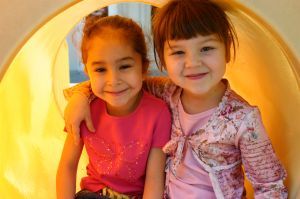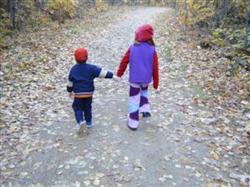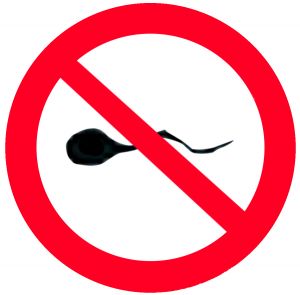Build Early Math Skills When You Count, Group and Compare
By Guest Blogger Ariel Everett
When we think of math, many of us may think of algebra, calculus, geometry, trigonometry or struggling to master advance concepts. However, we all use simple math skills every day when we cook dinner, do laundry, go grocery shopping, check the time or create a family budget. Understanding basic math skills is a key foundation for success in life.
It’s hard to believe, but science tells us that 80% of brain growth occurs by age three and 90% by age five. Scientists at Harvard University identified five simple ways for parents and caregivers to build simple skills with young children; these are known as The Basics. Because math is such an important skill, one of the Basics — Count, Group and Compare — focuses on developing the early math skills that are so critical. And the best part is, learning math skills does not have to be hard or frustrating for you or your child. You do not have to take out a special chunk of time in your day to work on math skills; you can just incorporate them into your day! There are some very easy, and fun, things you can do with young children to help lay the foundation for addition, subtraction and other key math concepts when they get older.
Below are a number of ways that you and your child can Count, Group and Compare:
- Practice rote counting (counting aloud) and use one to one correspondence (touch each object as you say the number).
- You can count anything from snacks to stuffed animals.
- Try counting each spoonful of food as you put it into your child’s mouth.
- Count how many steps it takes to get from the bathroom to the bedroom after bath time or brushing teeth.
- Count the steps on the staircase as you walk up or down them.
- At the grocery store, count the produce as you place it into bags. For example, you can say, “we need four red and three green apples.” You can count each color individually as you place them into the bag. Then, after you get home, you can discuss how many there are in total.
- Include your child in on cooking and baking. You can give them tasks where they help scoop a certain amount of ingredients into the bowl. Make sure you count aloud with them!
- Explore what happens when you add or take away items from a group. For example, at snack time ask your child: “You have three crackers. How many will you have if you eat one?”
- Encourage your child to sort objects into different groups. They can sort things by size (big and small), color, length (long/tall and short), shape or other features.
- Let your child help you separate the laundry into different color piles. Then, tell them to bring you piles of a certain color.
- Use positional words in your everyday language as much as you can.
- While building with blocks you can say “I am putting the red block on top of the purple block.”
- At the table during mealtimes you can say “you are sitting beside me.”
- While pulling into a parking space, you can point out what cars are next to, across from/in front of you.
- Incorporate comparing into story time while you are discussing the book. You can say “The dog on this page has black spots and is short, but the one on this page is brown all over and tall.”
- Point out the shapes around you. For example, tell your child: “The clock is a circle. Do you see any other circles?” This is a fun way to help keep your child entertained when you are out doing errands or waiting at the doctor’s office.
- Put on some music and clap and dance with your child. He or she will learn about patterns while also having fun.
- Give your child a container to scoop and dump water in the bathtub. Use words like “in” and “out,” “full” and “empty.”
- In the kitchen, give your child a container and two lids. See if they can figure out which lid fits and then put it on. Use size and shape words like “longer” and “wider.” Once they get the hang of it, try more containers and lids.
You do not have to be a math teacher to start preparing your child to be a problem solver. Do not be afraid to start small! For more tips on ways to Count, Group and Compare with your child, visit guilfordbasics.org/the-basics/count-group-and-compare.
Our guest blogger, Ariel Everett, is an early childhood teacher at Greensboro Day School.
Want to get notifications on local events and happenings? Subscribe to Triad Moms on Main’s free weekly newsletters here.






